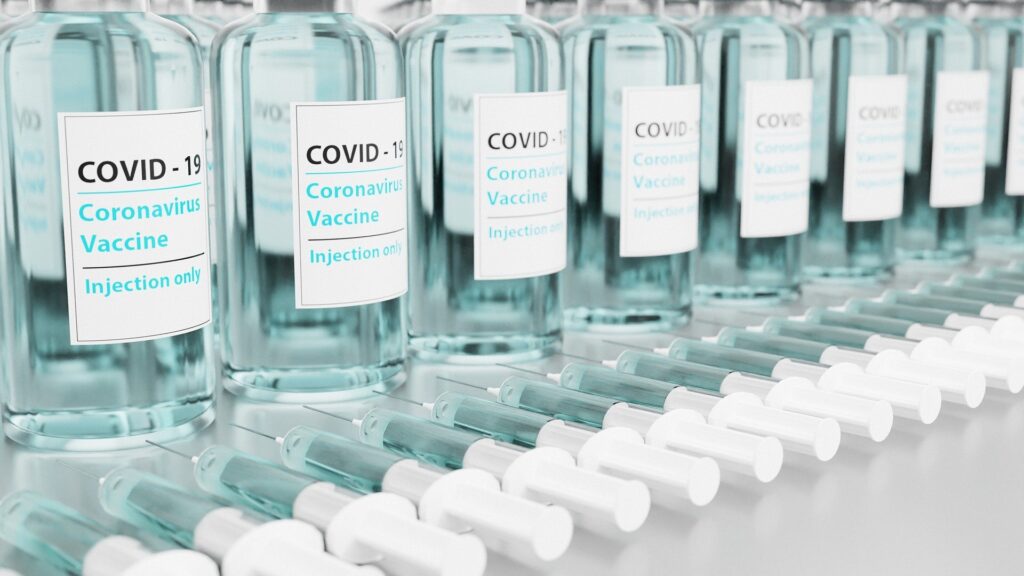
[ad_1]
Credit: Pixabay/CC0 Public Domain
When reports showed that COVID-19 vaccination rates were lower among minority racial/ethnic groups, most discussions focused on mistrust and misinformation among these populations or their limited access to health facilities. However, new research from the University of California San Diego and collaborating institutions has identified an additional obstacle to equity: whether or not each healthcare facility has actually received and administered vaccines.
In a study published July 28, 2022 in PLOS medicineResearchers showed that healthcare facilities serving underrepresented, rural and hard-hit communities were less likely to administer COVID-19 vaccines in the early phase of vaccine introduction.
Led by Inmaculada Hernandez, PharmD, Ph.D., associate professor of clinical pharmacy at the Skaggs School of Pharmacy and Pharmaceutical Sciences at the University of California San Diego, the study is the first to quantify differences in the early distribution of COVID-19 vaccines to healthcare facilities across the country.
Previous studies of vaccine accessibility have failed to distinguish whether lower access in underserved neighborhoods is due to lower concentrations of healthcare facilities in those areas or to inequities in the distribution of COVID-19 vaccines to each healthcare facility.
To answer this question, Hernandez and colleagues tested whether the likelihood of an appropriate healthcare facility administering COVID-19 vaccines varies based on the racial/ethnic makeup and urbanity of the local county. The team focused on the early stages of vaccine rollout, using data from May 2021, when states were officially required to make vaccines available to the public.
At the time, 61 percent of eligible healthcare facilities and 76 percent of eligible pharmacies in the US provided COVID-19 vaccines. When the researchers began comparing these rates to the socioeconomic characteristics of the district in which each facility was located, several patterns emerged.
Facilities in counties with high Black proportions were less likely to serve as sites for COVID-19 vaccine administration than facilities in counties with low Black proportions. This was particularly in metropolitan areawhere facilities in urban counties with many Black populations were 32 percent less likely to administer vaccines than facilities in urban counties with small Black populations.
Facilities in rural counties and in counties hardest hit by COVID-19 were also associated with lower odds of serving as sites for COVID-19 vaccine administration. In rural counties with a high Hispanic population, facilities were 26 percent less likely to administer vaccines than facilities in rural counties with a low Hispanic population.
“Both national policy and public opinion agreed that vaccine distribution should prioritize disadvantaged communities hardest hit by COVID-19, but the data shows that was not the case,” Hernandez said.
More research is needed to determine the reasons why vaccines have not been fairly distributed to all health Center and how the involvement of these institutions has evolved in subsequent phases vaccination distribution, the authors said.
“To achieve health equity in future public health programs, including the distribution of booster shots, it is critical that public health officials review these early COVID-19 distribution plans to understand how and why this happened,” the said Senior Author Jingchuan (Serena) Guo , MD, Ph.D., Assistant Professor at the University of Florida.
Co-authors include Shangbin Tang and Nico Gabriel from UC San Diego, Sean Dickson from the West Health Policy Center, and Lucas A. Berenbrok from the University of Pittsburgh.
Inmaculada Hernandez et al., Differences in COVID-19 vaccine distribution across US counties: A cross-sectional study based on geographic information systems, PLOS medicine (2022). DOI: 10.1371/journal.pmed.1004069
Provided by
University of California – San Diego
Citation: Study finds disparities in COVID-19 vaccine distribution in United States (2022, July 28) retrieved July 28, 2022 from https://medicalxpress.com/news/2022-07-disparities-states- covid-vaccine.html
This document is protected by copyright. Except for fair trade for the purpose of private study or research, no part may be reproduced without written permission. The content is for informational purposes only.
[ad_2]
Source link